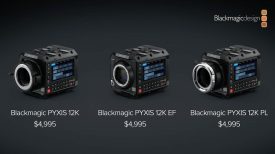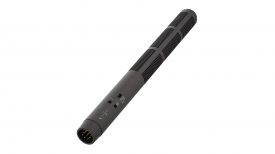J.J. Abrams must be a happy man. He, and countless other filmmakers, were brought up on Super 8 film. Now, thanks to Kodak, they have a new camera option for the format – with some very modern bells and whistles.
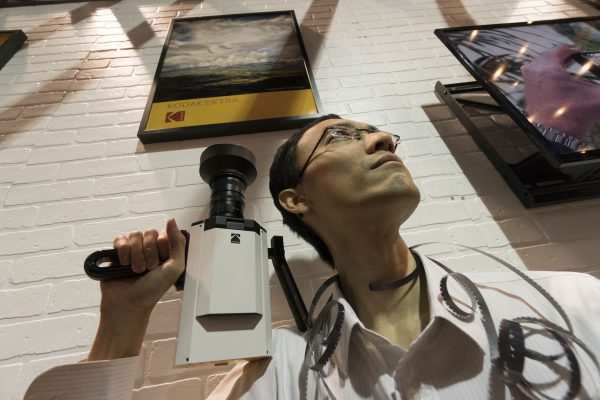
After much anticipation, Kodak finally showed their new Super 8 camera to the public at CES in Las Vegas. Lok Cheung from our sister site Photo Gear News went hands on with it and I got a thorough run through its specs.
The first thing you notice when you pick up the camera are that it feels substantial and beautifully put together, not cheap and plasticky. It weighs a healthy 1.36kg with battery but no lens or film.
Next thing is that it has a large flip-out 4-inch LCD screen that shows what the camera is recording and allows the user to adjust settings easily. It can be tilted 90 degrees, but not a full 180. Don’t be fooled; this does not mean that the camera records video. There is a sensor in the camera, but it is simply for monitoring. The LCD image is actually viewed off ground glass and flickers wonderfully when the shutter is engaged when filming. There is even a Micro HDMI out if you want to monitor this feed externally. There is a built-in light meter to aid with exposure setting.
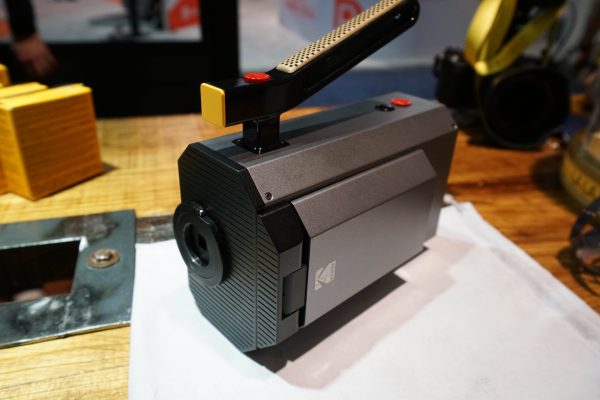
Camera settings are done on an wheel and button that look similar to those of an old iPod. The user interface is clean and simple.
You can trigger the camera several ways, a large red button on the removable grip being the most obvious. There is another button on the top handle and yet another on the top of the camera body. You can also use a regular Lanc controller plugged into a jack on the rear of the camera.
The camera has a C-mount that allows a range of lenses to be screwed into it. The stock lens is a petite Ricoh 6mm f1.2. Focus is a purely manual affair. It has a 40.5mm thread and comes with a lens hood with a more useful 62mm thread if you want to add filters.
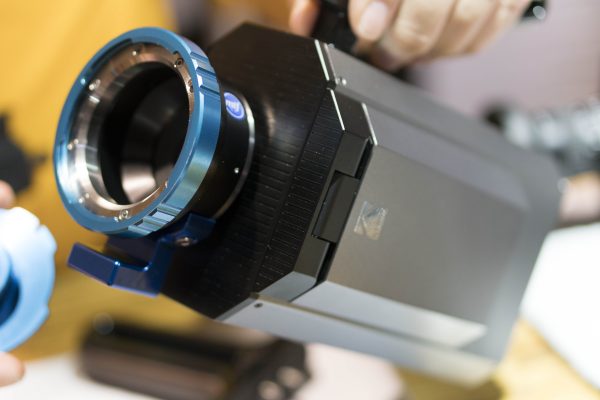
Kodak were also showing the camera with different lens choices – a third-party zoom, a Nikon lens adapter and a PL adapter from MTF services. Don’t forget, though, that the small size of Super 8 film means you’ll need short focal lengths to get even a moderately wide shot. I suspect many users will simply use old C-mount film lenses or newer CCTV lenses.
There is no audio recorded onto the film, but the camera has a mic input and headphone monitoring for sound that is sent to an internal SD card in .wav format. This links to markers on the film so that the two can be combined in post later if you want.
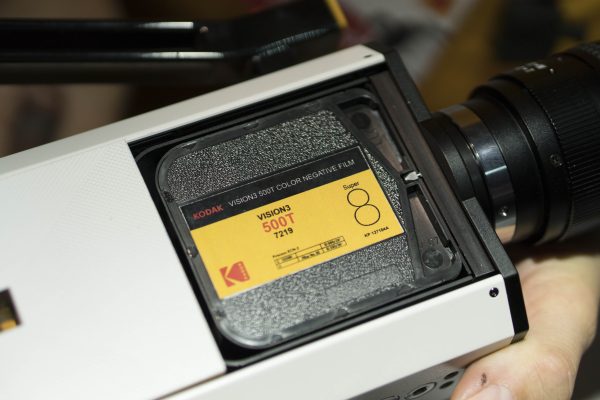
The camera takes standard Super 8 50 FT / 15 M cartridges and can shoot at 18, 24, 25 or 36 FPS. There are several popular film stocks available from Kodak. With the introduction of the camera there will be a consumer service to simply mail your film in for processing and have it sent back to you. This is very reminiscent of the old days of Kodachrome.
Power is via an 7.200 mAh internal battery that is charged via micro USB. Kodak say this should be good for around 12 cartridges of film before it needs recharging. Recharging to full from empty takes about 3.5 hours.
There is a regular 1/4 20 screw thread on the bottom of the camera that allows it to be mounted on a tripod or rig, but in order to fit it you first need to remove the handgrip.
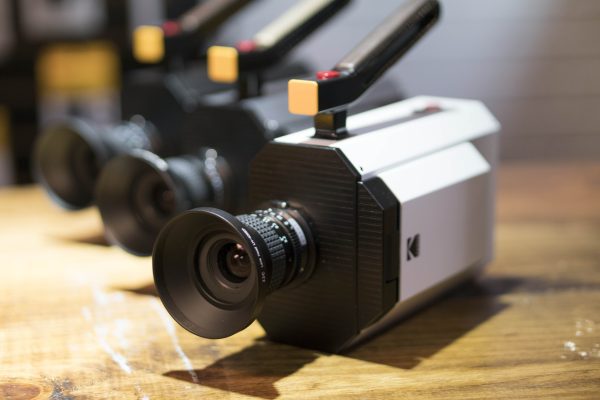
The price for the basic versions of the camera in black or white, with powder-coated metalwork, have not yet been set. The special edition space grey version with anodised metalwork will cost around $2000 US in kit form. In addition, the grip on the special edition has a nice leather finish.
It should be available in spring 2017. And in case you are wondering: yes, J.J. has seen the camera – and I suspect he’ll be getting one of the very first off the line.



